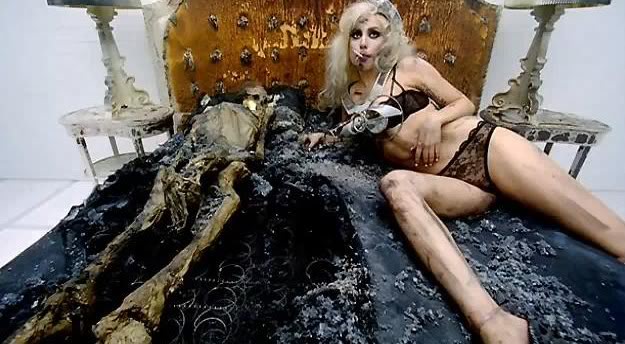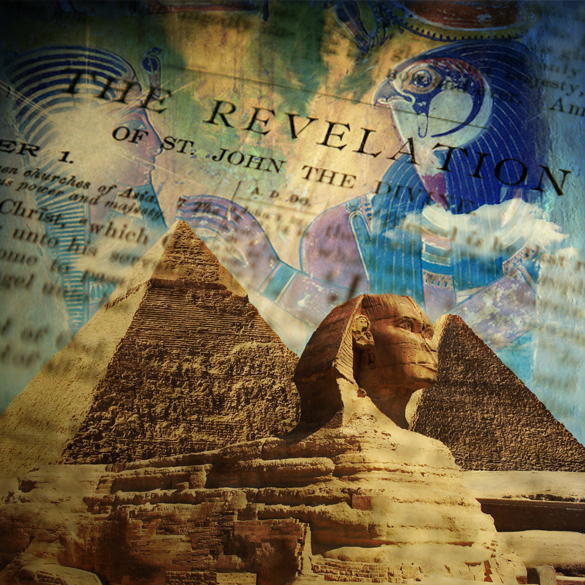By John W. Whitehead
9/3/2010
“This mornig my little 8 year old sister…scremed to the tope of her lungs ‘ ! I LOVE LADY GAGA TILL DEATH!’ over and over agin HISTERICLY and crying because she saw a lady gaga video…now she cant talk HEY BUT I LOVE HER TWO HAHAHA.”— Lady Gaga Facebook fan
With a record-breaking 17 million fans on Facebook, an equally chart-topping 5 million followers on Twitter, the most popular hashtext on twitter (#becauseofgaga), the most watched YouTube video (“Bad Romance,” with over 271 million views), and more than $34 million in ticket sales from her Monster Ball Tour, Lady Gaga, a.k.a. the artist formerly known as Stefani Germanotta, is undeniably a musical force to be reckoned with. At least for the moment.
Nominated for 13 MTV Music Video Awards, including four for “Bad Romance” (which attracted so much attention when it premiered that it ground Gaga’s website to a halt), Gaga knows how to fill seats, sell albums and incite a frenzied devotion among her followers, whom she affectionately refers to as “Little Monsters.” The emphasis is on the “little.” With a fan base dominated by the under-20 set (her fans on Facebook range in age from 10-21), the driving force behind Gaga’s popularity and success comes from “kidpower.” Yet the content of Gaga’s music and videos is far from kid-friendly, and the impact on her young female fans is particularly troublesome.
Indeed, Gaga admits that “the last thing a young woman needs is another picture of a sexy pop star writhing in sand, covered in grease, touching herself.” However, if you were to replace “sand” with “brothel floor” and “grease” with “diamonds,” Gaga is precisely “another sexy pop star,” albeit one whose hyper-sexualized façade has greatly contributed to the pornification of American culture. As theatre historian and University of Illinois professor Mardia Bishop explains, “pop culture and porn culture have become part of the same seamless continuum. As these images become pervasive in popular culture, they become normalized… and… accepted.”
Given the youth of Gaga’s fanbase, however, this foray into porn culture—the increasing acceptability and pervasiveness of sexualized imagery in mainstream media—is where the Gaga phenomenon takes a dark turn. “Visual images and narratives of music videos clearly have more potential to form attitudes, values, or perceptions of social reality than does the music alone,” notes author Douglas A. Gentile in his book Media Violence and Children, “because they add additional information and rely less on imagination.” For example, Gaga’s critically acclaimed “Bad Romance” video packs a lot of messages—none of them wholesome—into a five-minute musical in which the singer is kidnapped, drugged, and forced to sell herself as a prostitute to the highest bidder. The video ends with a scantily clad Gaga lying on a bed in a post-coital pose beside the smoldering skeleton of her “customer” while her pyrotechnic bra emits fire.
That said, Gaga is far from the only mainstream artist contributing to the sexualization and pornification of young children through the mediums of pop music and music videos. Among the worst culprits constantly bombarding young people today with sexual images and references are music videos, which are found daily in 75-80% of the homes of 9- to 14-year-olds. Children between the ages of 8 and 18 spend approximately 30–120 minutes a day watching music videos—75% of which contain sexually suggestive materials, and with the advent of portable technology, children’s television and music are often unmonitored by parents or guardians. Not only does this accelerate adolescent sexual behavior (girls between the ages of 12-14 are two times more likely to engage in sexual activity after being exposed to sexual imagery), but it increases the likelihood of more sexual partners.
As for Gaga’s “little monsters,” between the celebrity worship and the hyper-sexed imagery found in the pop star’s videos, they’re getting double-teamed. Indeed, Nancy Bauer, a Tufts University professor, argues that as “adoration of celebrities as idols or role models is a normal part of identity development in childhood and adolescence,” young girls often look to celebrities as moral exemplars. This adoration can manifest itself from something as simple as putting up posters of the celebrity to more destructive behaviors, such as starving oneself to mimic a celebrity’s body shape.
Thus, to younger children, Lady Gaga crawling around on the floor in diamonds and giving a lap dance to an emotionally distant male stranger becomes the embodiment of Gaga behavior—to be studied and emulated. For example, the image of Gaga with overly large, computer-generated eyes in “Bad Romance” has given rise to a whole new craze in eyewear—circle lenses. After the video premiered, a professional make-up artist and spokesperson for Lancome, Michelle Phan, uploaded a “How To” video teaching girls how to achieve a similar look. The instruction video, which calls for five layers of false lashes, two eyeliners, brow gel, three different eye shadows, a brow pencil, circle contact lenses, and an anti-inflammatory “not meant for daily use,” received over 12 million hits. One user commented “!? Nice ^^ I want to do this look but I’am just 11 years old!!!” Another girl, 16 years old, admitted to owning 22 pairs of the dangerous (and expensive) lenses. The American Optometric Association, however, has cautioned that the lenses used, which increase the apparent size of the eye by covering not only the iris but also part of the whites of the eyes, pose serious health risks, including “the potential for irreversible sight loss.” If Gaga intended her large eyes to represent innocence lost – a fair and, admittedly, clever, symbol – that’s not what 12 million young viewers got out of it.
That Gaga’s fan base is significantly younger and therefore less capable of comprehending the difference between reality and fantasy and more likely to interpret imagery on a literal level than the fans of past artists demonstrates why Gaga is such a central factor in the pornification of American youth through popular music. Anything they see, whether it’s Gaga caged up with vertebrate sticking out of her back or Gaga using her sexuality to seduce and then murder a male counterpart as she does in “Bad Romance,” is accepted as fact. Her outrageous fashion choices and excessive make-up keep up this façade. As Gaga herself admits, “I don’t even drink water onstage in front of anybody, because I want them to focus on the fantasy of the music.”
But as professor Bauer notes, “the difference [between Gaga and other celebrities] is, somehow, that these people feel individually like [Gaga’s] a real role model—that they could be her.” It is precisely this reciprocal relationship, something that usually manifests itself only in individuals with borderline-pathological celebrity worship syndrome that explains the difference between Gaga’s fans and others. Fans that are not otherwise borderline-pathological hold similar mindsets, including the fantasy that Gaga loves them on a personal level, shares in their successes and failures, and is not only a role model but also a projection of the self.
Gaga reinforces this perception through her own carefully choreographed behavior, appearing to show genuine love and an almost motherly concern for her fans. As she explains to one interviewer, “What I’m really trying to say is I want the deepest, darkest, sickest parts of you that you are afraid to share with anyone because I love you that much.” Gaga also manages to create a sense of intimacy and reciprocity in what is traditionally a non-reciprocal relationship, constantly attributing her success and happiness to her fans. For example, Gaga tattooed “Little Monsters” on her forearm, tweeting, “Look what I did last night. Little monsters forever, on the arm that holds my mic.” In response, one fan gushed, “If I ever meet YOU, I’m going to get your signature tattooed on me too!!” Another states, “I wish we could sit down together and talk about all this stuff together. You would love the stories I have! And I know you’d believe me.”
This pseudo-reciprocal relationship, then, is foundational to Gaga’s pervasive impact on fans. After all, when fans are imbued with a sense of importance, they become ravenous consumers of associated commercial products. Yet, in an ironic take on “Bad Romance,” in the end, it’s Gaga’s young fans who are being used for their consumer appetites and sold to the highest bidder.
And what merchandise those appetites have spawned. Gaga’s once obscure fashion has come to inspire Prada, Armani, and Alexander Wang. Nude corsets, lace, bodysuits, feathers, and “the pantsless look” have all been featured on the runways. Particular materials—corsets, high-heels, leather, rubber, fur, and underwear as outerwear are all commonly used in the porn industry, and all appear in Gaga’s “Bad Romance.” These fashions, like fashions of the past, trickle down to reach young girls—which explains how sexually provocative slogans like “Feeling Lucky” find themselves stamped on the backs of underwear marketed to 7 year olds.
Clearly, there are trade-offs in every relationship, and Lady Gaga is no exception. However, while Gaga gets stardom, wealth and affirmation out of her young fan base, it is not without a certain amount of trepidation that one wonders what her “little monsters” are getting in return.




Great article! I’m in the processing of writing a paper for my university class on the effects of hyper-sexualized and commodified pop stars on adolescent girls, and this is a fabulous and current find. Well said!
Terrific work! This is the type of information that should be shared around the web. Shame on the search engines for not positioning this post higher!
Being a Little Monster, of course I’m going to defend Lady Gaga. But even if I wasn’t a Little Monster, I would think she’s a good role model and a good person. To some people, Lady Gaga’s videos are unnecessary and inappropriate, and sure some parts are. But if you dig deeper into the videos, all of her songs and videos have a meaning. She doesn’t put just anything into her videos and songs. It all has a meaning and some people can’t see it, unfortunately. They are works of art. I think she’s a wonderful role model because she is always telling people to love themselves and be themselves and don’t try to be anyone else. She’s for gay rights, which I find very important, and she’s completely again’st hate. And I think the Little Monsters (which should be capitalized) realize the meanings to her songs, videos, etc. and don’t react the way some people do. We know what she’s trying to say and what she’s getting at. If you don’t like her, fine. But she’s a great role model, a talented role model, a SMART role model. Lady Gaga deserves more credit for what she’s doing. She’s “changing the world, one sequin at a time.”
And by the way, this Little Monster is 14 girl. Just thought I should let you know.
Kelly, there are also thousands of artists in the music industry that are promoting ‘love’ and have ‘deeper meanings’ to their videos and songs, that are doing it in a clean and responsible manner. You obviously do not have kids or are an extremely irresponsible parent because i for one would not want my child running around expressing there beliefs the way that Lady Gaga expresses hers. She may be ‘saying’ the words ‘love yourselves’ but she is definitely not promoting that statement through her actions.
I appreciate her drive for honesty and her passion, but like i said, I don’t believe she is expressing it in such a way that makes her, in any way, a decent role model.
Matt
Kelly,
There are also thousands of artists in the music industry that are promoting ‘love’ and have ‘deeper meanings’ to their videos and songs, that are doing it in a clean and responsible manner. You obviously do not have kids or are an extremely irresponsible parent because i for one would not want my child running around expressing there beliefs the way that Lady Gaga expresses hers. She may be ‘saying’ the words ‘love yourselves’ but she is definitely not promoting that statement through her actions.
I appreciate her drive for honesty and her passion, but like i said, I don’t believe she is expressing it in such a way that makes her, in any way, a decent role model.
Matt Priest
Great article, I couldn’t help thinking about the rise and fall of what was the Brittany Spears experience and visualize her and her crew of ladies dressed like school girls skipping provocatively thru the school halls singing I’m not that innocent! Sure the tweenies loved it and so did the perves and privateers of kiddie porn. GaGa is like Madonna on double strength steroids. I see the sensationalism, the need to garner attention at any cost to her own self-esteem. It’s like a guy who says he drinks because he wants to, so he gets drunk everyday and everyday he looks like he’s been drunk and had a fight with a couple of brick walls and the sidewalk, but he’s happy drinking! I don’ t see where “role model” applies to her or any of the performers or athletes. Our society has really dumbed down values in the last decade. The responsibility of parenting shouldn’t be left to celebrities but the current parents easily relinquish that power and influence. I just hope for her own well being that GaGa doesn’t crash like Spears or Winehouse
I have been reading your articles Gadfly ONLINE | Lady Gaga and the Pornification of America and they are very useful for me to learn something new and intresting. And You can also visit our web also high yield investment.